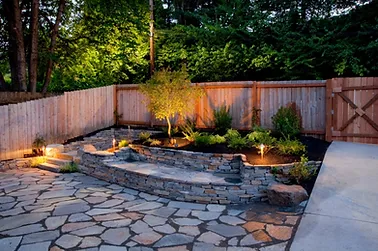Numa Gardens is a Bay-Area drought tolerant and outdoor living contractor that specializes in creating low-water landscapes and outdoor living spaces. In the following article, Numa Gardens discusses how they plan and execute innovative landscape design projects, touching on the principles of this art.
Northern California is known for many iconic things, including the Golden Gate Bridge, Yosemite National Park, and its majestic redwood trees.
However, NorCal has recently started gaining recognition for the beautiful landscape designs scattered all over the region. The region’s Mediterranean climate, which allows locals to experience warm, dry summers and mild, wet winters, provides the perfect conditions for diverse species of plants to flourish. As a result, there is an abundance of lush landscapes and gardens all year round.
Numa Gardens explains that these landscapes vary in shape and size, depending the location as well as what
native and exotic plants are available for use. Whether it’s a succulent garden in a coastal area or a lush vineyard in wine country, landscape design is intertwined with North California’s culture.
Numa Gardens Details the Principles of Landscape Design
Landscape design is the process of combining elements of the indoors and outdoors, creating a pleasing and practical outdoor living space.
When working on any such project, certain elements must be taken into consideration in order to achieve a successful design. According to the article
Water Wise Landscaping: Principles of Landscape Design, which was published by the Colorado State University Extension, there are 7 principles of landscape design, including unity, scale, balance, simplicity, variety, emphasis, and sequence.
Numa Gardens maintains that applying these interconnected elements will result in a visually pleasing landscape that can transform any space.
The following are the main principles of landscape design:
• Unity
In design, unity means that all parts of the landscape work together, creating a beautiful overall look. All elements in the area, including colors, shapes, sizes, and textures are well-placed to create a unified space.
• Scale
This refers to the relationship of elements in the landscape in terms of size. Size Scaling can be used to make other elements appear bigger or smaller, achieving a more dynamic design.
• Balance
Numa Gardens notes that balance is another important principle. The arrangement and distribution of elements within the landscape should evoke harmony and stability. Balance can be achieved either symmetrically or asymmetrically.

 • Simplicity
• Simplicity
When it comes to outdoor design, simplicity is key. Simple in terms of cleanliness and free of clutter. Numa Gardens notes that this doesn’t mean that a design cannot be complex. Many landscapes incorporate complex features, such as water and lighting elements, while staying simple in aesthetic.
• Variety
This element works hand in hand with simplicity. It balances out the simplicity by preventing monotony through colors, textures, and form.
• Emphasis
This refers to the focal points of the design, the areas that first attract the viewer’s attention from any specific position. The landscape should have strong focal points, but they must be formed with care; balancing dominance when arranging elements is key.
• Sequence
Sequence is what gives the landscape movement and flow. This can be achieved by combining textures, colors, and contrasting plants with certain patterns in mind.
Artists at Work: Planning and Executing Landscape Design Projects
Numa Gardens says that when facing a new landscape design project, the first important step is to observe the space, taking in cues of its natural shape and form. It’s better to build the design from there, as opposed to having a set design already in place without considering the natural features of the space.
After observation, the next step is to determine which parts of the existing space will be accentuated or muted. Safety elements should also be considered, like if the space is in a
wildfire-prone area.
Then the fun begins - it’s time to start the project!
It’s important to note that success in landscape design projects relies on the balance between having a good vision for the space while keeping achievable design goals. These two factors need to be feasible and well within the client’s budget.
Numa Gardens notes that the next step is to meet with clients so that they can communicate their design preferences and what improvements they want to see. From there, landscape artists can formulate a cohesive plan based on what has been agreed upon.
From there, it’s all about making the vision into a reality. One will determine what soft scape (plants, trees, and groundcovers) and other elements will best suit the client’s vision to add the right feeling, aesthetic, or natural motion to the space, creating a simple, balanced, and unified design.

 • Simplicity
• Simplicity